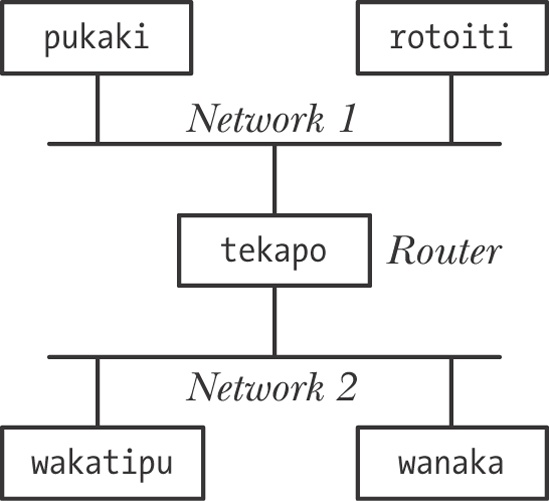This chapter provides an introduction to computer networking concepts and the TCP/IP networking protocols. An understanding of these topics is necessary to make effective use of Internet domain sockets, which are described in the next chapter.
Starting in this chapter, we begin mentioning various Request for Comments (RFC) documents. Each of the networking protocols discussed in this book is formally described in an RFC. We provide further information about RFCs, as well as a list of RFCs of particular relevance to the material covered in this book, in Section 58.7.
An internetwork or, more commonly, internet (with a lowercase i), connects different computer networks, allowing hosts on all of the networks to communicate with one another. In other words, an internet is a network of computer networks. The term subnetwork, or subnet, is used to refer to one of the networks composing an internet. An internet aims to hide the details of different physical networks in order to present a unified network architecture to all hosts on the connected networks. This means, for example, that a single address format is used to identify all hosts in the internet.
Although various internetworking protocols have been devised, TCP/IP has become the dominant protocol suite, supplanting even the proprietary networking protocols that were formerly common on local and wide area networks. The term Internet (with an uppercase I) is used to refer to the TCP/IP internet that connects millions of computers globally.
The first widespread implementation of TCP/IP appeared with 4.2BSD in 1983. Several implementations of TCP/IP are derived directly from the BSD code; other implementations, including the Linux implementation, are written from scratch, taking the operation of the BSD code as a reference standard defining the operation of TCP/IP.
Note
TCP/IP grew out of a project sponsored by the US Department of Defense Advanced Research Projects Agency (ARPA, later DARPA, with the D for Defense) to devise a computer networking architecture to be used in the ARPANET, an early wide area network. During the 1970s, a new family of protocols was designed for the ARPANET. Accurately, these protocols are known as the DARPA Internet protocol suite, but more usually they are known as the TCP/IP protocol suite, or simply TCP/IP.
The web page http://www.isoc.org/internet/history/brief.shtml provides a brief history of the Internet and TCP/IP.
Figure 58-1 shows a simple internet. In this diagram, the machine tekapo is an example of a router, a computer whose function is to connect one subnetwork to another, transferring data between them. As well as understanding the internet protocol being used, a router must also understand the (possibly) different data-link-layer protocols used on each of the subnets that it connects.
A router has multiple network interfaces, one for each of the subnets to which it is connected. The more general term multihomed host is used for any host—not necessarily a router—with multiple network interfaces. (Another way of describing a router is to say that it is a multihomed host that forwards packets from one subnet to another.) A multihomed host has a different network address for each of its interfaces (i.e., a different address on each of the subnets to which it is connected).
